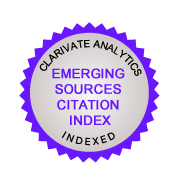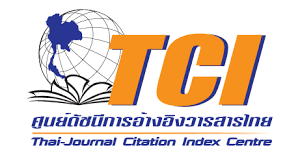Incorporating black dust into autoclaved aerated concrete wall for heat transfer reduction
Keywords:
Black dust, Autoclaved aerated concrete, Heat transfer reduction, Automotive refinishing industryAbstract
Black dust is a waste product of the automotive refinishing industry in Thailand. Instead of removing black dust by landfill disposal, an innovative approach of utilizing black dust as the mixture for the preparation of autoclaved aerated concrete (AAC) was investigated. Results demonstrate that black dust is able to provide higher compressive strength and more extended time lag than conventional materials. The chemical properties of black dust were investigated by using X-ray fluorescence analyzer. The use of black dust content of 20 wt.% replacement of fine sand was the optimum composition, which possessed a low density of around 0.58 g·cm-3, a maximum compressive strength of ~ 4.6 MPa and the lowest proportion of thermal conductivity of 0.120 W·m-1K-1. The AAC incorporating the optimum black dust content significantly increased in the thermal effectiveness of the building materials by extending approximately 25% the time for the heat wave to flow through the exterior wall to the interior wall, reducing ~ 33% heat flux and achieving ~ 4.7% lower room temperature when compared with the conventional AAC.Downloads
References
L. J. Hunag, H. Y. Wang, and Y. W. Wu, “Properties of the mechanical in controlled low-strength rubber lightweight aggregate concrete (CLSRLC),” Construction and Building Materials, vol. 112, pp. 1054-1058, 2016.
A. Wongsa, Y. Zaetang, V. Sata, and P. Chindaprasirt, “Properties of lightweight fly ash geopolymer concrete containing bottom ash as aggregates,” Construction and Building Materials, vol. 111, pp. 637-643, 2016.
N. Dulsang, P. Kasemsiri, P. Posi, S. Hiziroglu, and P. Chindaprasirt, “Characterization of an environment friendly lightweight concrete containing ethyl vinyl acetate waste,” Materials & Design, vol. 96, pp. 350-356, 2016.
H. S. Tao, Research for developing aerated concrete by using fly ash with high calcium of Gehua power plant in Hongshan, Wuhan University of Technology, WuHan, 2004.
O. Koronthalyova, “Moisture storage capacity and microstructure of ceramic brick and autoclaved aerated concrete,” Construction and Building Materials, vol. 25, pp. 879-885, 2011.
I. B. Topcu and B. Isıkdag, “Effect of expanded perlite aggregate on the properties of lightweight concrete,” Journal of Materials Processing Technology, vol. 204, pp. 34-38, 2008.
B. G. Ma and X. Zheng, “Study on a new kind of aerated concrete containing efflorescence sand-phosphorus slag–lime,” Journal of Building Materials, vol. 2, no. 3, pp. 223-228, 1999.
Y. Wang, J. Yin, J. C. Chen, and C. Q. Peng, “Aerocrete made with low silicon tailings of Cheng Chao iron ore mine,” Journal Wuhan University of Technology, Materials Science Edition, vol. 15, no. 2, pp. 58-62, 2000.
N. Y. Mostafa, “Influence of air-cooled slag on physicochemical properties of autoclaved aerated concrete,” Cement and Concrete Research, vol. 35, pp. 1349-1357, 2005.
Q. K. Wang, Y. Z. Chen, F. X. Li, T. Sun, and B. B. Xu, “Microstructure and properties of silty siliceous crushed stone-lime aerated concrete,” Journal Wuhan University of Technology, Materials Science Edition, vol. 21, no. 2, pp. 17-20, 2006.
F. X. Li, Y. Z. Chen, and S. Z. Long, “Experimental investigation on aerated concrete with addition of lead–zinc tailings,” Journal of Southwest Jiaotong University, vol. 43, no. 6, pp. 810-815, 2008.
H. Kurama, I. B. Topcu, and C. Karakurt, “Properties of the autoclaved aerated concrete produced from coal bottom ash,” Journal of Materials Processing Technology, vol. 209, pp. 767-773, 2009.
X. Y. Huang, W. Ni, W. H. Cui, Z. J. Wang, and L. P. Zhu, “Preparation of autoclaved aerated concrete using copper tailings and blast furnace slag,” Construction and Building Materials, vol. 27, pp. 1-5, 2012.
K. Jitchaiyaphum, T. Sinsiri, C. Jaturapitakkul, and P. Chindaprasirt, “Cellular lightweight concrete containing high-calcium fly ash and natural zeolite,” International Journal of Minerals, Metallurgy and Materials, vol. 20, no. 5, pp. 462-471, 2013.
International Organization of Motor Vehicle Manufacturers, 2017. 2017 Production statistics, Available from: http://www.oica.net/category/ production-statistics/2016-statistics/
A. Thongtha, A. Khongthon, T. Boonsri, and H. Y. Chan, “Thermal effectiveness enhancement of autoclaved aerated concrete wall with PCMcontained conical holes to reduce the cooling load,” Materials, vol. 12, no. 13, pp. 2170, 2019.
A. Thongtha, S. Maneewan, C. Punlek, and Y. Ungkoon, “Investigation of the compressive strength, time lags and decrement factors of AAC-lightweight concrete containing sugar sediment waste,” Energy and Buildings, vol. 84, pp. 516-525, 2014.
Downloads
Published
How to Cite
Issue
Section
License
Copyright (c) 2019 Journal of Metals, Materials and Minerals

This work is licensed under a Creative Commons Attribution-NonCommercial-NoDerivatives 4.0 International License.
Authors who publish in this journal agree to the following terms:
- Authors retain copyright and grant the journal right of first publication with the work simultaneously licensed under a Creative Commons Attribution License that allows others to share the work with an acknowledgment of the work's authorship and initial publication in this journal.
- Authors are able to enter into separate, additional contractual arrangements for the non-exclusive distribution of the journal's published version of the work (e.g., post it to an institutional repository or publish it in a book), with an acknowledgment of its initial publication in this journal.








